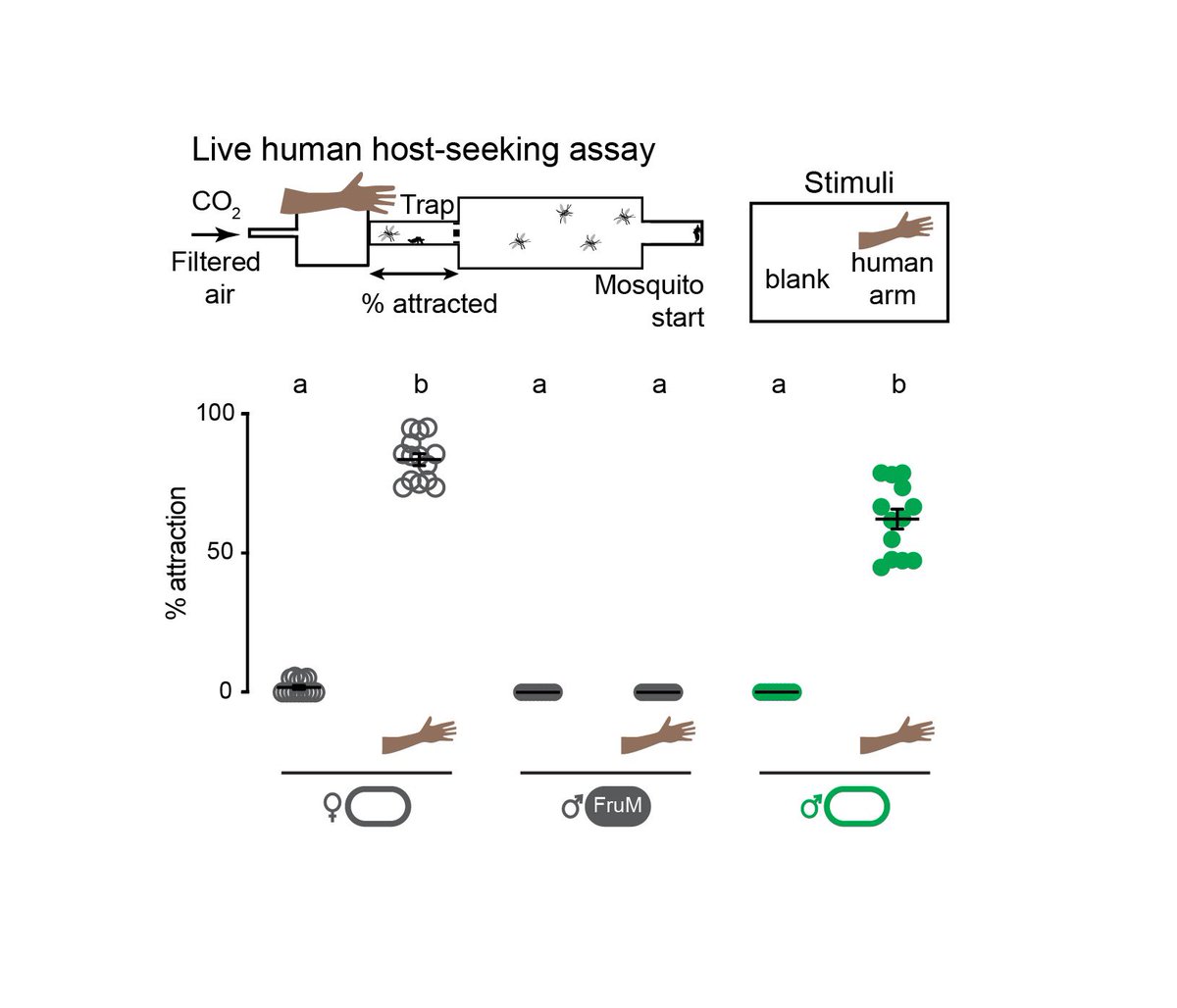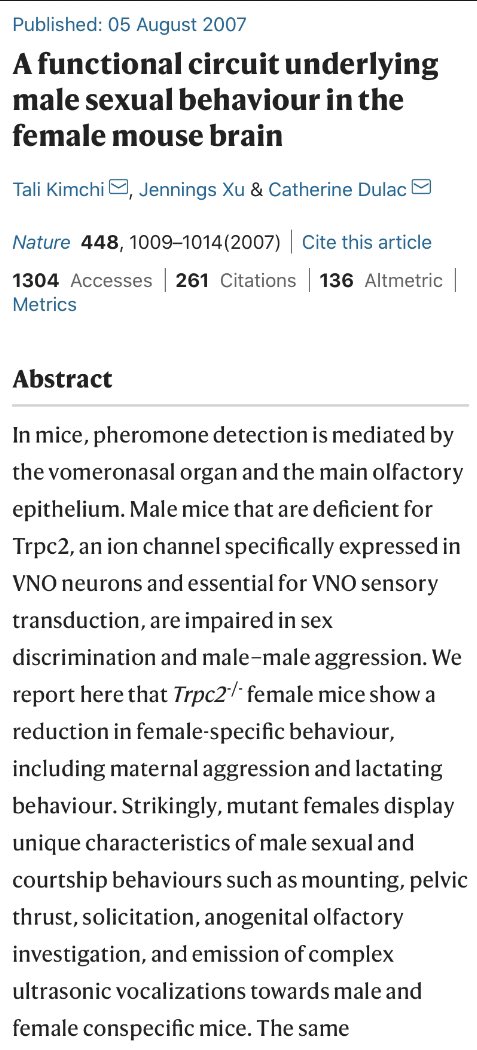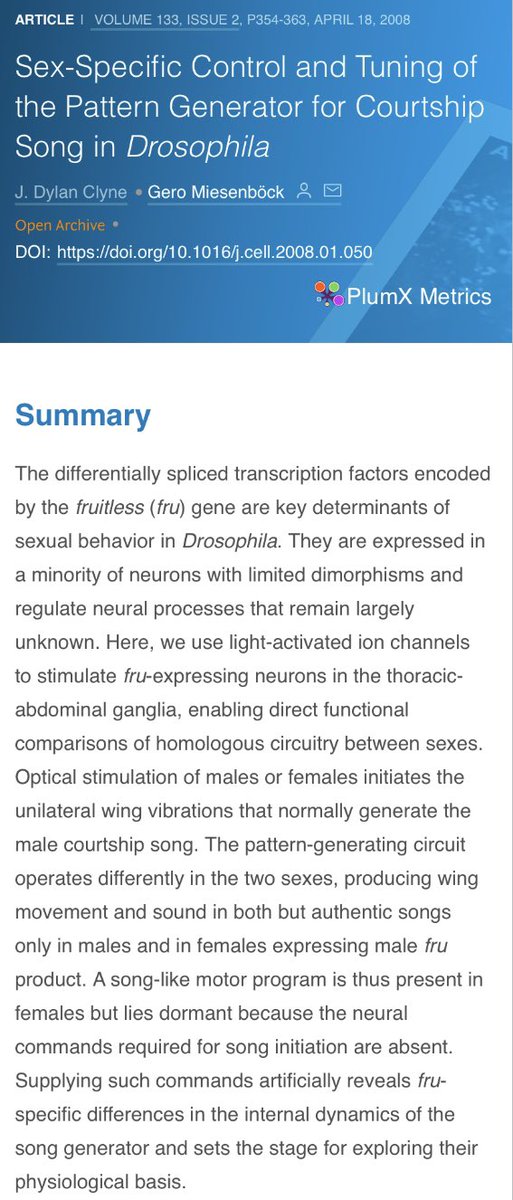Super excited to share my first first-author paper with @pollyp1, out now on @biorxivpreprint. We made male mosquitoes that are attracted to humans!! (1/n) https://www.biorxiv.org/content/10.1101/2020.09.04.282434v1">https://www.biorxiv.org/content/1...
Only female mosquitoes feed on blood. When I put my arm next to a cage of females, they immediately try and bite it. The males don’t seem to care! (2/n)
What genes control this difference in behavior? We wondered whether the fruitless gene might be involved, and used CRISPR to knock it out in the mosquito. (3/n)
Something incredible happened- fruitless male mosquitoes were attracted to a live human arm!!! By knocking out this one gene, we force males to host seek. (4/n)
The Quattroport olfactomer I used to assay host-seeking behavior was built and optimized by the amazing postdoc @EllenDeObaldia, and you can see it in this video shot by @NewsHour (5/n)
Why was this fruitless result surprising? This gene has been studied for decades in Drosophila, because it specifies male courtship and mating behaviors. We confirmed that fruitless is required for mating in the mosquito as well. (6/n)
So is fruitless generically controlling all sexually dimorphic behaviors in the mosquito? We think not. With @yaeltea, we found that fruitless mutant males show normal feeding behavior and do not blood-feed. They also show normal attraction to floral cues like honey. (7/n)
So fruitless is not acting generically, but what specific cues are driving the mutant male attraction to a human arm? We think the most salient cues given off by a human in this context are heat and human odor. (8/n)
With @MoritaTakesh1, we found that fruitless mutant males are not attracted to heat, similar to wild type males and unlike wild-type females who love warm objects. (9/n)
We then turned to odor. We presented males with human odor captured on a nylon stocking and found that the mutant males loved this smell! Exactly like with a live human arm. (10/n)
To put this all together, we think that fruitless has gained a new role in the mosquito. In addition to controlling mating, it now prevents wild-type male host-seeking specifically in response to human odor. (11/n)
This implies the neural circuits driving host-seeking are present in both male and female mosquitoes, and are repressed in the male by fruitless. This principle is similar to other sexually dimorphic circuits in flies and mice, and is exciting to see in the mosquito too. (12/n)
But fruitless specifically controls dimorphism in olfactory host-seeking, so what about blood feeding?? Stay tuned for our work on the genetic basis of blood feeding  https://abs.twimg.com/emoji/v2/... draggable="false" alt="🦟" title="Mosquito" aria-label="Emoji: Mosquito">
https://abs.twimg.com/emoji/v2/... draggable="false" alt="🦟" title="Mosquito" aria-label="Emoji: Mosquito">  https://abs.twimg.com/emoji/v2/... draggable="false" alt="🩸" title="Tropfen Blut" aria-label="Emoji: Tropfen Blut"> (13/n)
https://abs.twimg.com/emoji/v2/... draggable="false" alt="🩸" title="Tropfen Blut" aria-label="Emoji: Tropfen Blut"> (13/n)
This was a frustrating project to get to work, since it seemed like everything I did to touch the fruitless locus failed (see table S1). But all worth it to see this result!! (14/n)
Check out our paper to find more details of our work. We hope you enjoy reading it and look forward to any feedback or comments on the preprint. (15/n)
And lastly thanks to every one who helped make this possible, particularly @EllenDeObaldia, @MoritaTakesh1, @margo_herre, and @yaeltea and then #VosshallLab. And of course thanks to @pollyp1 for being a fabulous mentor and consistently cheering me on when it got tough. (16/16)

 Read on Twitter
Read on Twitter




